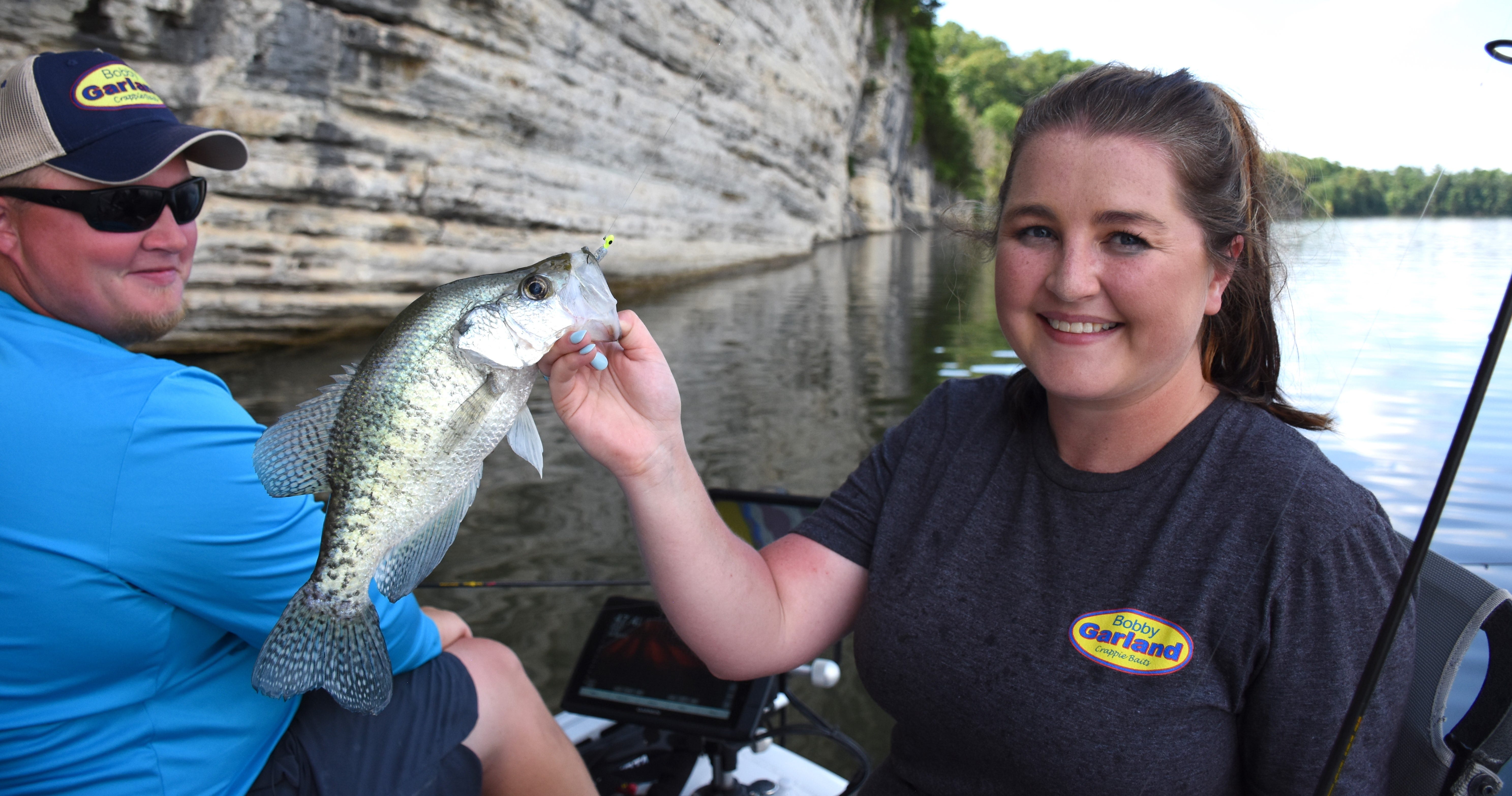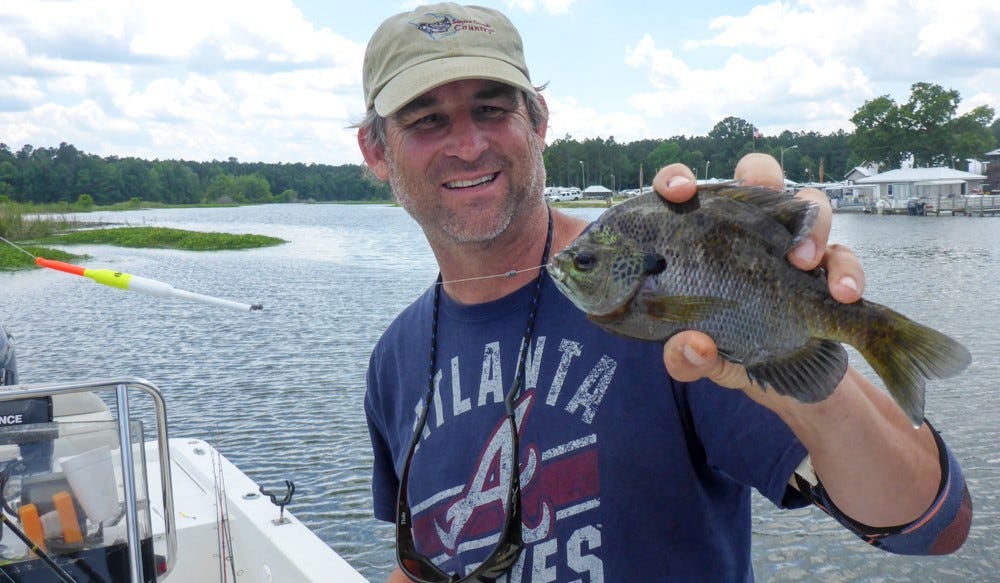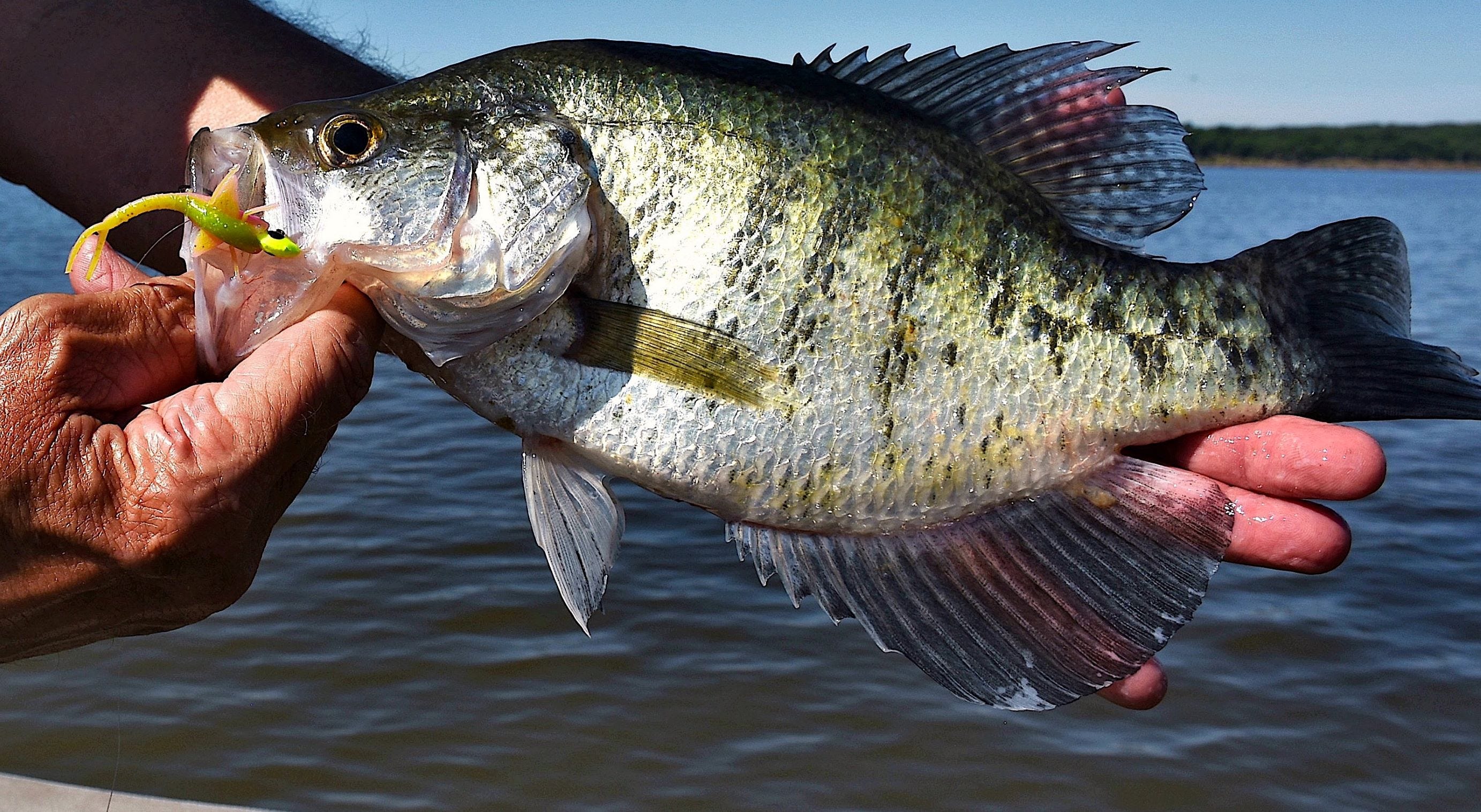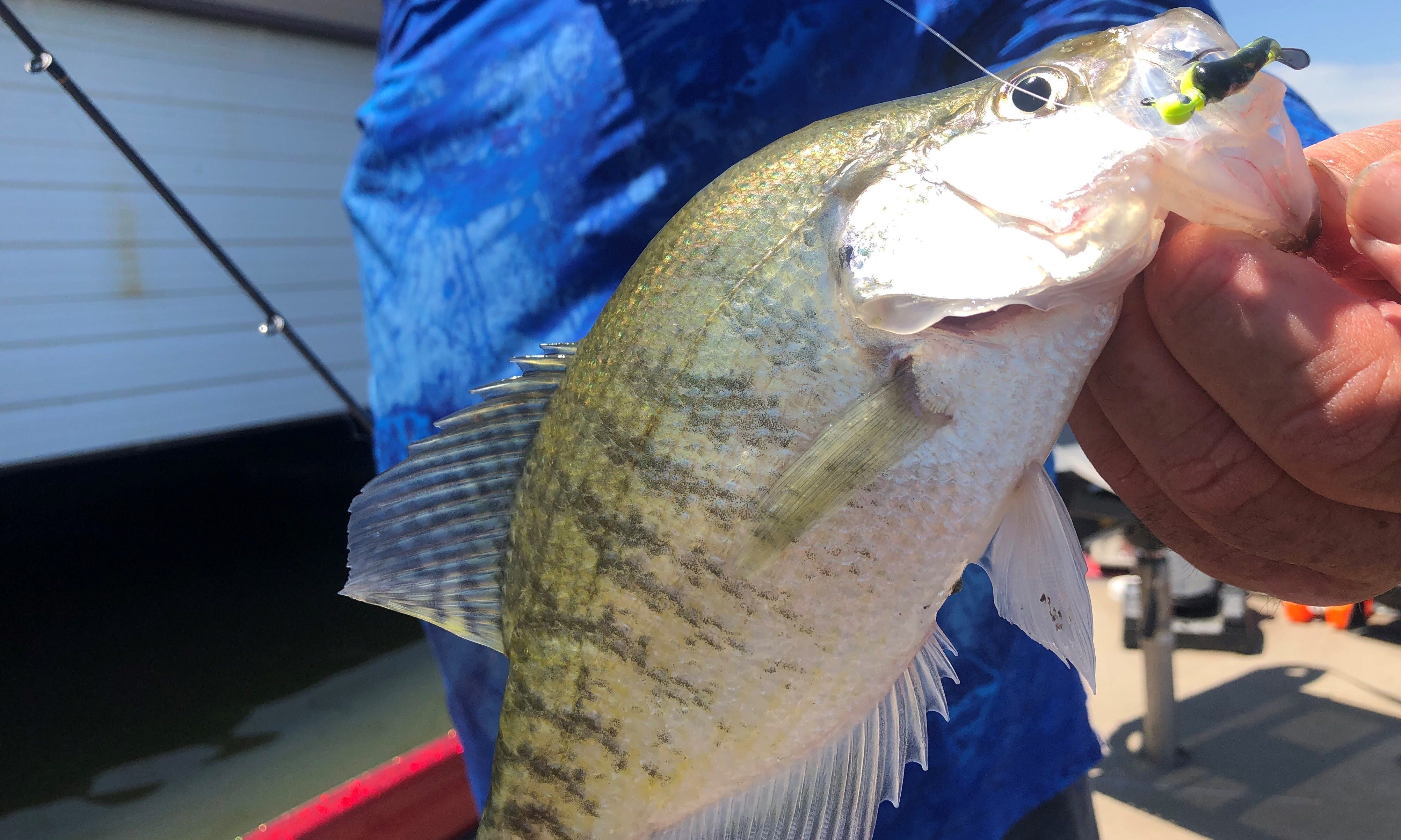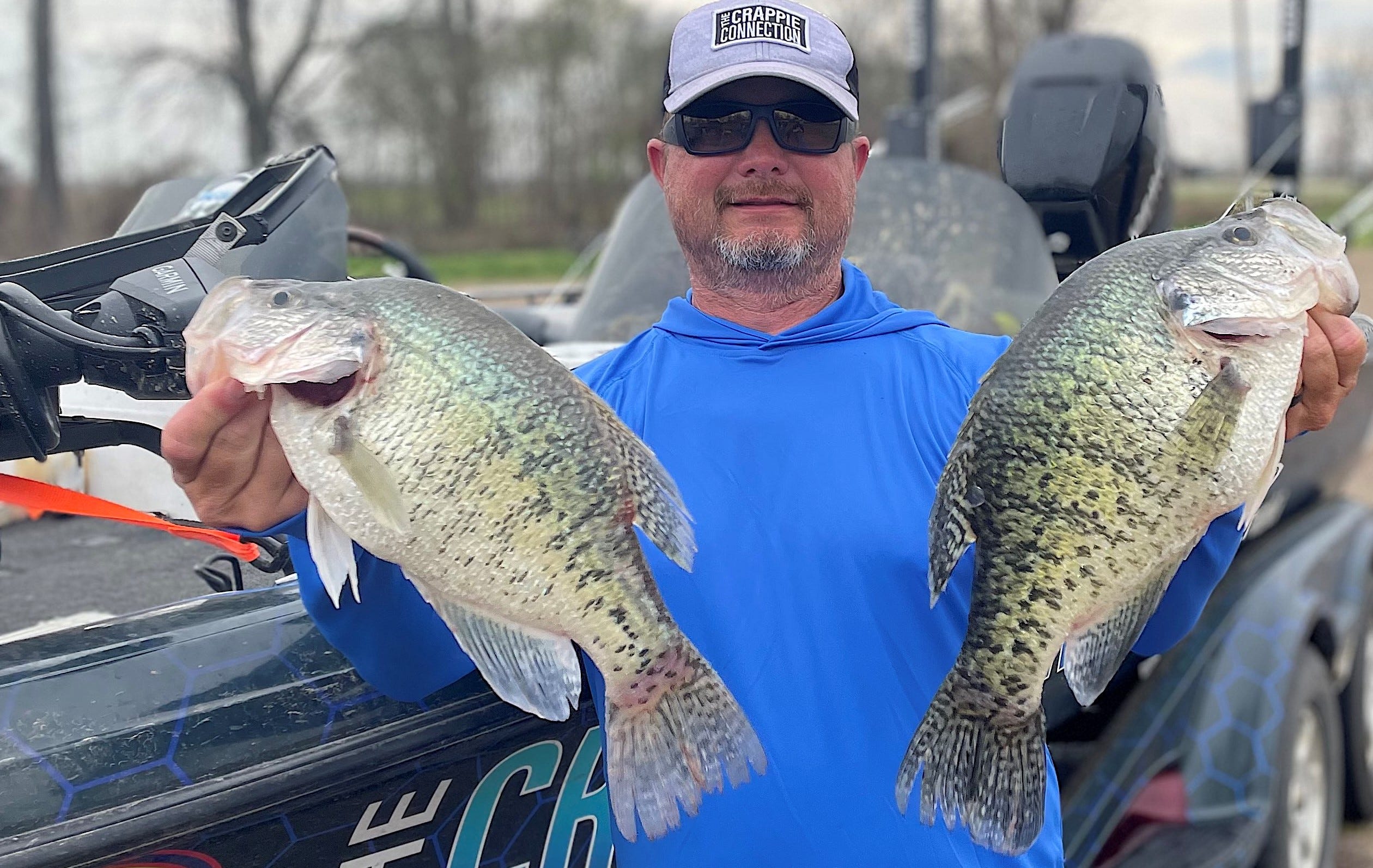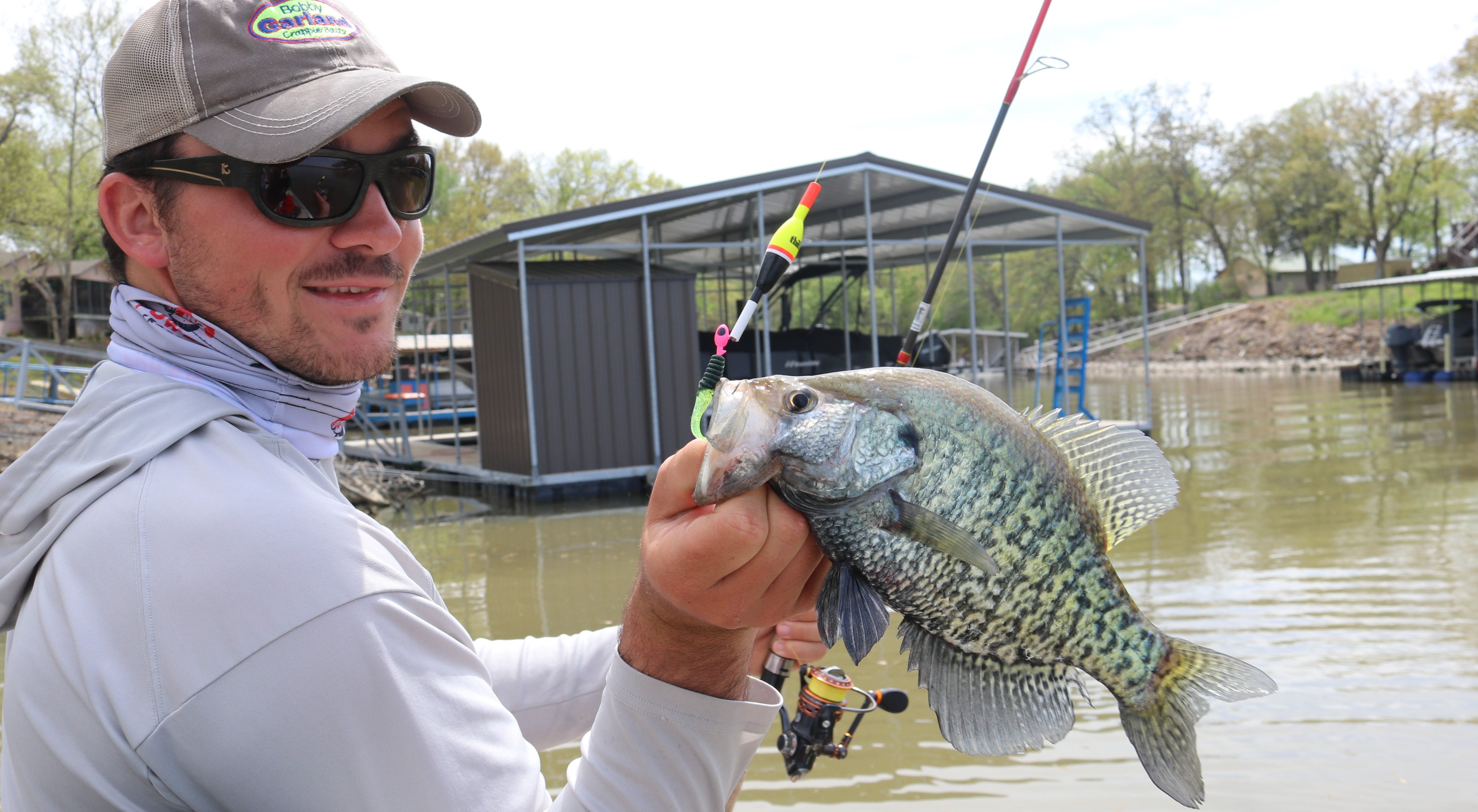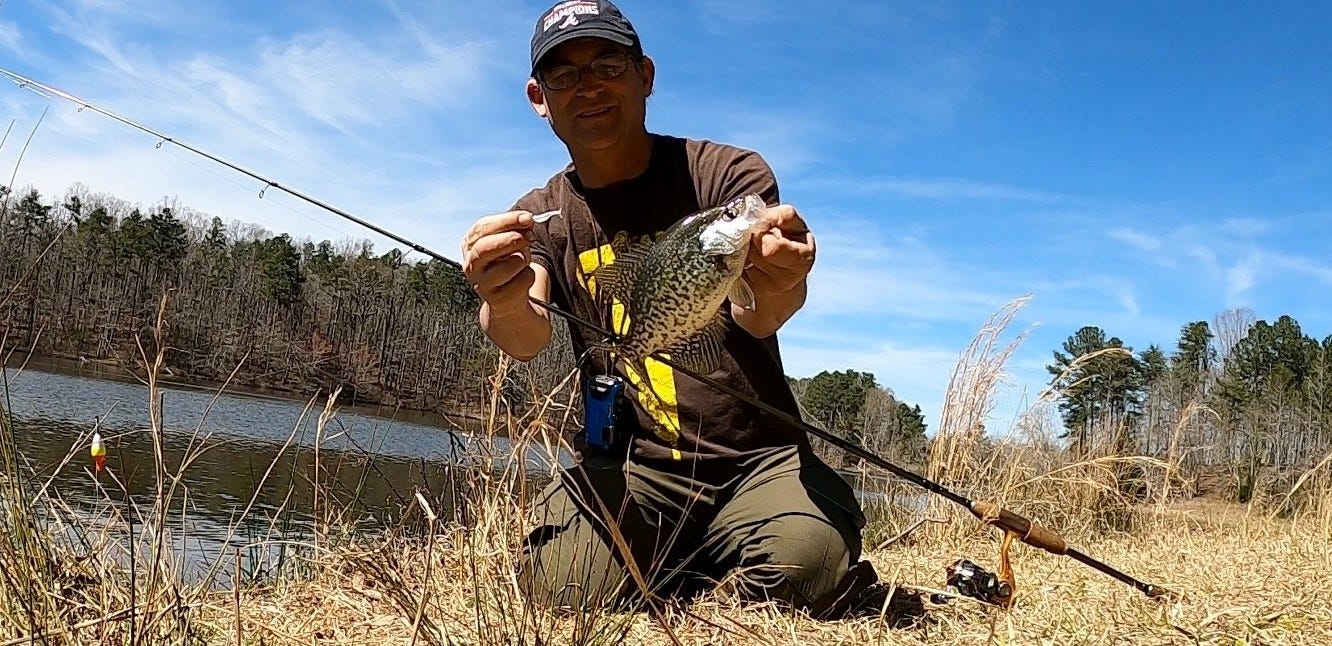- Aug 8, 2022
Hot Crappie Fishing Tips: How to Bluff Late Summer Slabs
Successful summer crappie fishing begins with finding the fish. Learn how two top anglers use bluffs to their advantage.
When we want to escape the heat of summer, we move into the cool confines of our air-conditioned homes. When crappie on reservoirs want cooler conditions, the fish head for bluffs.
Bluffs on impoundments are often along river channels, so the structure offers access to cooler, deeper water. The rock walls also provide hours of shade, creating cooler zone that is ideal for summer crappie fishing
Asked about summer crappie fishing tips, Texas tournament competitor Jeff Schwieterman noted his belief that rapid depth changes attract crappie to bluffs. “Crappie can quickly go to shallow water for feeding and then get to the deeper water for comfort,” he said.

